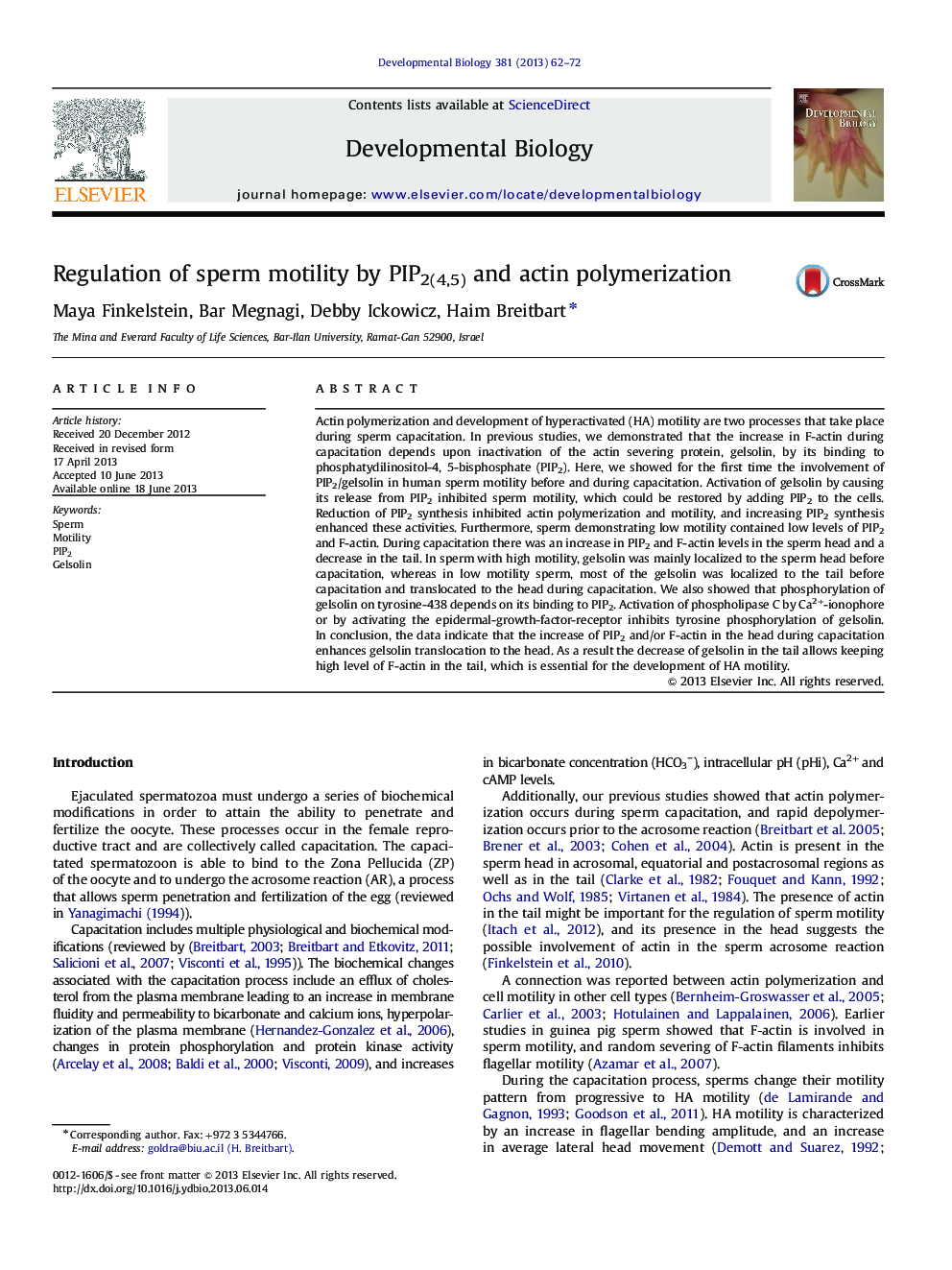| کد مقاله | کد نشریه | سال انتشار | مقاله انگلیسی | نسخه تمام متن |
|---|---|---|---|---|
| 10932091 | 1093686 | 2013 | 11 صفحه PDF | دانلود رایگان |
عنوان انگلیسی مقاله ISI
Regulation of sperm motility by PIP2(4,5) and actin polymerization
دانلود مقاله + سفارش ترجمه
دانلود مقاله ISI انگلیسی
رایگان برای ایرانیان
موضوعات مرتبط
علوم زیستی و بیوفناوری
بیوشیمی، ژنتیک و زیست شناسی مولکولی
بیولوژی سلول
پیش نمایش صفحه اول مقاله

چکیده انگلیسی
Actin polymerization and development of hyperactivated (HA) motility are two processes that take place during sperm capacitation. In previous studies, we demonstrated that the increase in F-actin during capacitation depends upon inactivation of the actin severing protein, gelsolin, by its binding to phosphatydilinositol-4, 5-bisphosphate (PIP2). Here, we showed for the first time the involvement of PIP2/gelsolin in human sperm motility before and during capacitation. Activation of gelsolin by causing its release from PIP2 inhibited sperm motility, which could be restored by adding PIP2 to the cells. Reduction of PIP2 synthesis inhibited actin polymerization and motility, and increasing PIP2 synthesis enhanced these activities. Furthermore, sperm demonstrating low motility contained low levels of PIP2 and F-actin. During capacitation there was an increase in PIP2 and F-actin levels in the sperm head and a decrease in the tail. In sperm with high motility, gelsolin was mainly localized to the sperm head before capacitation, whereas in low motility sperm, most of the gelsolin was localized to the tail before capacitation and translocated to the head during capacitation. We also showed that phosphorylation of gelsolin on tyrosine-438 depends on its binding to PIP2. Activation of phospholipase C by Ca2+-ionophore or by activating the epidermal-growth-factor-receptor inhibits tyrosine phosphorylation of gelsolin. In conclusion, the data indicate that the increase of PIP2 and/or F-actin in the head during capacitation enhances gelsolin translocation to the head. As a result the decrease of gelsolin in the tail allows keeping high level of F-actin in the tail, which is essential for the development of HA motility.
ناشر
Database: Elsevier - ScienceDirect (ساینس دایرکت)
Journal: Developmental Biology - Volume 381, Issue 1, 1 September 2013, Pages 62-72
Journal: Developmental Biology - Volume 381, Issue 1, 1 September 2013, Pages 62-72
نویسندگان
Maya Finkelstein, Bar Megnagi, Debby Ickowicz, Haim Breitbart,